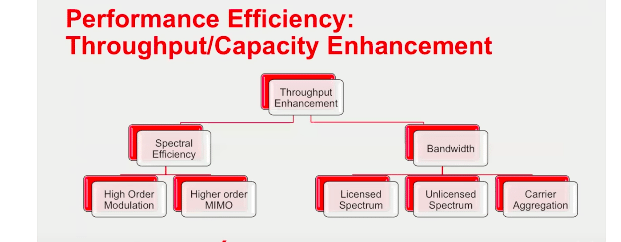Spectrum prices and the demand for data are both skyrocketing, so wireless carriers have no choice but to use what they’ve got more efficiently. Ed Donofrio, executive director for network support at Verizon Wireless, outlined the carrier’s strategies for spectral efficiency on a recent RCR Wireless News webinar.
“The efficient use of spectrum is critically important to provide the capacity and speed that our customers want and need,” said Donofrio. “Speed is capacity, and the faster a device can exchange data, and the ability to get a device on and off the network, does present a capacity improvement, and an efficiency.”
Donofrio said there are two basic parameters Verizon can use to improve LTE throughput. One is to improve spectral efficiency by using the features of LTE-Advanced. The other is to add additional bandwidth without adding more licensed bands.
Verizon’s LTE-A technologies include 4×4 multiple-input multiple-output (MIMO) antennas, and higher order modulation schemes, like 256 QAM on the downlink and 64 QAM on the uplink. Donofrio said these yield theoretical capacity improvements of 33% on the downlink and 50% on the uplink.
Carrier aggregation is the primary way Verizon is adding bandwidth, with three component carriers and plans to add unlicensed spectrum to achieve four-carrier and even five-carrier aggregation. License-assisted access and Citizens Broadband Radio Service provide “a real exciting step towards 5G,” Donofrio said.
“We’ve learned a lot about providing one gigabit service to our customers, that is one gigabit per second over the air, and the challenge in transporting a much higher magnitude and a higher speed of data as traffic flows from the Verizon network and then to and from the internet,” said Donofrio.
Working with Ericsson and Qualcomm, the carrier recently demonstrated 953 megabits per second on a commercial network in Boca Raton, Fla. That demonstration used four carrier aggregation (three 20 megahertz licensed bands and one 20 megahertz LAA band), as well as 4X4 MIMO and 256 QAM.
Follow me on Twitter.

